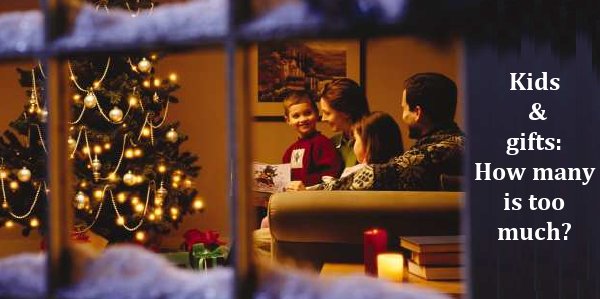Despite the many messages from all corners promoting a “more is better” philosophy when it comes to holiday gifts, the truth is far more complex — especially for children. While most parents work hard to give their kids everything they need and much of what they want, it is often hard to draw the line, prompting many well intentioned moms and dads to ask, “How much is too much?”
In general, the answer lies within each family. Parents should purchase what makes sense to them and what they believe their children will use and appreciate. However, in recent years, child psychologists and experts in child development have returned to these questions as economic conditions have forced many families to scale back, both throughout the year and during the holiday season.
Books such as “The Pampered Child Syndrome” (Jessica Kingsley, 2006) by Maggie Mamen and “Give Me, Get Me, Buy Me” (HCI, 2010) by Donna Corwin and several others on the same topic offer similar conclusions: When children are given too much over the course of their childhoods, they can develop a serious case of entitlement, become unappreciative of what they have and begin to equate love with “stuff.” And for younger children, receiving a huge pile of gifts in one sitting can be both overwhelming and overstimulating.
If you have been wondering about these issues, here are some general guidelines for having a fun-filled holiday with just enough stuff.
Make a gift plan
Before setting out on your shopping expeditions, devise a plan that makes sense for your family. If you have younger children, decide on the number of gifts for each. With older children, you might want to establish a dollar amount rather than a gift amount. Once you’ve made the plan, stick to it — no matter what.
Draw names
Particularly in bigger families, gift-giving can become a financial and emotional burden if everyone buys for everyone. Drawing names not only reduces those burdens, but often results in more meaningful gifts all around.
Play a Gift Exchange Game
Gift exchanging is a good idea to limit the number of gifts children give and receive. Usually during the game each participant only gets one gift. I recently wrote about one such game here. This will work better, I imagine, with older children who are competitive but are “good sports” because their chosen gift can get stolen (but they also have the option of stealing too). However, there are versions of gift exchanging for younger children too; get creative.
Opt for a shared experience
Consider pooling the money you would have spent on individual gifts and putting it toward a special outing, vacation or shared item for your home. Long after the toys have broken and the electronics have stopped working, your children will cherish their memories of a holiday that focused on sharing time together.
Communicate & Donate
If Grandpa Mike or Aunt Emily has a reputation for heaping on the presents at Christmas or Chanukah, let them know ahead of time that one will do, then offer a suggestion that is sure to please your son or daughter. If they insist that they want to do more, consider asking them to make a donation in your child’s name to a charitable organization or to purchase a gift for a local child in need.
Collaborate
Sometimes one big gift makes a lot more sense. If your child would love a new bike or a trampoline or horseback riding lessons, consider asking extended family members to contribute to that item or to items that go with it, such as a helmet or other gear.
 There is no need to go over-board with spending on children’s gifts at Christmas. Often we feel we need to spoil our children this time of year, (“Christmas comes but once a year”) but are we really doing them any favours by giving them heaps of presents? Can they appreciate them all?
There is no need to go over-board with spending on children’s gifts at Christmas. Often we feel we need to spoil our children this time of year, (“Christmas comes but once a year”) but are we really doing them any favours by giving them heaps of presents? Can they appreciate them all?



Quality blog page, See you again soon